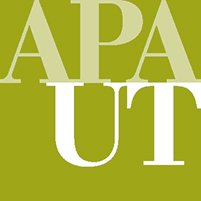Clamor is King
April 14, 2022 by admin
Policy/Legislative
Disclaimer: The views and opinions expressed in this article are those of the author and do not necessarily reflect the views or positions of APAUT.
Paul Allred, Kaysville City, Planning Commissioner.
Part 1 – Clamor is King
PUBLIC CLAMOR and OUR UTAH HOUSING CRISIS
Does anyone else agree that as a state we don’t seem to be making much of a dent in the housing shortage? Almost daily I read a new article about how dire things are in the housing market even though I can clearly see massive, new apartment buildings going up all over the place and likewise, I see no small amount of single-family home construction occurring. As I thought about what I could see, it became very clear; each one of those developments likely passed through a rigorous city review including a public process that almost certainly was slow and stressful for everyone. Then I thought about the public hearing process and what it usually entails and how it is not uniform across communities and how each development has its own life and personality and is unique in how it proceeds from birth to occupancy – or, how it doesn’t survive and never gets built. Sometimes, I’m amazed that anything ever gets built considering the many ways it can be stopped along the way.
I’ve observed a couple of rezones recently that got me thinking about how the public hearing process used by most communities unnecessarily stifles needed (Read: pent up) development and how, perhaps, things could be improved. The rezones were small and would result in no more than about 10 new dwellings. Nevertheless, they generated a substantial amount of heat and for me, dismay at the outcomes.
Among many ideas I had, the following ones jumped out at me. The first one is that these rezone hearings went on far too long and could have been much more efficient and less unpleasant. Example: Almost everyone who spoke at the microphone had already sent in written comments in the form of emails prior to the meeting. So, what was said at the podium was a repeat of what they’d already said and what the Planning Commission had read. (Department of Redundancy Department!)
Next, the residents who spoke virtually all said the same thing…over and over again; how long they lived in the area, why the rezone for density would destroy the neighborhood, why not put the proposed zone somewhere else like down by the interstate or next to the shopping center? how they were told by their realtor years ago that there’d never be any change to the area, etc. Sound familiar?
Then, each time there was a lull in the public hearing, instead of simply closing the hearing and moving to the discussion, the audience was prompted more than once to keep approaching the mic. By the end of it, it was almost impossible to envision anything but a vote to recommend to deny or continue the hearing. Any possibility of a “yes” vote given the negativity and peer pressure that an audience brings — regardless of the actual merits of the proposal itself – is highly unlikely.
There are essentially three or four groups involved in a rezoning hearing; the Board or Commission, residents, applicants, and professional staff. However, it is crystal clear that in most instances, the applicant is on unequal footing compared to the others as they often “disappear into the woodwork” after their initial presentation on the request. In my view, all these groups should have the ability to fully participate throughout the proceedings on the matter in order to arrive at the best decision. There is nothing inappropriate about courteous and well-managed exchanges between all groups to discover and discuss critical information about the proposal. In particular, professional staff should appropriately offer objective expertise and helpful commentary to assist in proper decision-making.
The basic premise of this message is that as an urban planner, it appears to me that the approval process for development is inconsistent, tremendously subjective and emotional, and far too inflexible to allow for the natural development of our communities. Rezones, are perhaps the most indicative example of systemic flaws in addressing both local and societal crises such as creating desperately needed housing. For Utah to solve its dearth of attainable housing will require innovation and courage beyond what is occurring at the moment. More must be done at the beginning of the process to give reasonable development proposals a decent chance of surviving the challenges of the public process at presently employed. Otherwise, making a real dent, or “moving the needle” in the shortage of housing will not likely occur.
What if the Utah Chapter APA, along with the ULCT, our local universities, and other professionals banded together to suggest to our legislature how land use laws might be changed to specifically improve land development processes and procedures by addressing the most observable problems? Here are just a few ideas:
- Consider mandatory pre-hearing meetings between the applicant and residents to build understanding and enhance dialogue. Some cities already do this. Perhaps the expansion of this practice will reduce fear, conflict, and apathy around public hearings.
- Encourage similar meetings but this time include staff (if available) to help educate the public about planning principles, the specific request, and fears or concerns about the proposal from a land-use perspective. Also, engage in Q &A on planning concepts to promote more objective commentary instead of reactionary and irrational thinking.
- Explore alternatives to the current in-person public hearing process such as allowing the government to choose to use internet-only hearings for some high conflict matters such as rezones, etc. The pandemic practice of Zoom meetings to conduct government hearings, in some ways, proved to be superior in receiving public input because a tension-filled room can impede proper decision-making. This is especially useful when the space may be limited and the alternative is crowded or overflow rooms. Returning to the use of remote internet technology in this way can help to reduce ambient noise, repetition of comments, distractions and can conversely increase the number and quality of public comments, allowing for the inclusion of those who are unable to travel to the meeting including those with physical or other challenges, and also reduce the psychological influence of crowds upon those speaking, etc.
Comments and ideas are welcomed by the author on how to improve the quality of the public hearing process and how to specifically address concerns or others of similar importance raised herein. Future articles along this same line of thinking may be forthcoming. Anyone who would like to discuss partnering up on articles or how to change the system, please contact me at pablotodorojo@gmail.com .
Author Paul Allred, AICP
pablotodorojo@gmail.com
Paul Allred has served as Community Development Director for the City of Holladay for the last thirteen years. He is a native of Burley, Idaho, and “Air Force brat”, having lived in many locations around the world before completing Bachelor’s and Master’s degrees in Geography and Urban Planning from BYU. Paul worked for Sandy City as a code enforcement officer and planner where he co-founded, and was President of the Utah Ordinance Compliance Association (UOCA) before managing Salt Lake City’s neighborhood association (SLACC) in the early 90’s. Paul then served Centerville City as the first full-time Community Development Director for almost ten years before doing CDBG work at Davis County and then joining Holladay in 2005. His emphasis in the public sector has been on community visioning, overhauling zoning ordinances, addressing changing demographics, and, especially upon place-making. Paul has regularly been a guest lecturer at the University of Utah on the connection between demographics and land use planning, chaired the Utah APA Awards Committee for several years, and planned and hosted the 2008 Fall APA conference. Paul is married and has three grown children.
Recent News
- » Hurry, it’s the final week to grab your conference tickets at regular prices!
- » 2024 APA UT Spring Conference: Cedar City, UT. The Call For Sessions is Currently Open.
- » Planning in the news: BYU students aim to eliminate parking woes through AI tracking system
- » Planning in the news: Living in Daybreak- What residents say the Utah community is really like
- » Planning In The News: Planning Commission green lights proposed ban on gas stations near waterways and parks
- » As states argue over who should cut their Colorado River use, a new plan puts the environment first

































